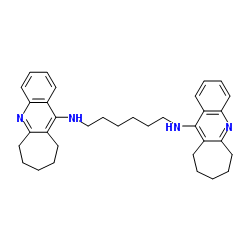N-terminal cleavage of GSK-3 by calpain: a new form of GSK-3 regulation.
Paloma Goñi-Oliver, José J Lucas, Jesús Avila, Félix Hernández
文献索引:J. Biol. Chem. 282(31) , 22406-13, (2007)
全文:HTML全文
摘要
Although GSK-3 activity can be regulated by phosphorylation and through interaction with GSK-3-binding proteins, here we describe N-terminal proteolysis as a novel way to regulate GSK-3. When brain extracts were exposed to calcium, GSK-3 was truncated, generating two fragments of approximately 40 and 30 kDa, a proteolytic process that was inhibited by specific calpain inhibitors. Interestingly, instead of inhibiting this enzyme, GSK-3 truncation augmented its kinase activity. When we digested recombinant GSK-3 alpha and GSK-3beta protein with calpain, each isoform was cleaved differently, yet the truncated GSK-3 isoforms were still active kinases. We also found that lithium, a GSK-3 inhibitor, inhibits full-length and cleaved GSK-3 isoforms with the same IC(50) value. Calpain removed the N-terminal ends of His-tagged GSK-3 isoenzymes, and exposing cultured cortical neurons with ionomycin, glutamate, or N-methyl-d-aspartate led to the truncation of GSK-3. This truncation was blocked by the calpain inhibitor calpeptin, at the same concentration at which it inhibits calpain-mediated cleavage of NMDAR-2B and of p35 (the regulatory subunit of CDK5). Together, our data demonstrate that calpain activation produces a truncation of GSK-3 that removes an N-terminal inhibitory domain. Furthermore, we show that GSK-3 alpha and GSK-3beta isoenzymes have a different susceptibility to this cleavage, suggesting a means to specifically regulate these isoenzymes. These data provide the first direct evidence that calpain promotes GSK-3 truncation in a way that has implications in signal transduction, and probably in pathological disorders such as Alzheimer disease.
相关化合物
| 结构式 | 名称/CAS号 | 分子式 | 全部文献 |
|---|---|---|---|
 |
GSK-3 BETA
CAS:9059-09-0 |
C34H42N4 |
|
Selectivity and anti-Parkinson's potential of thiadiazolidin...
2015-06-17 [ACS Chem. Neurosci. 6 , 911-9, (2015)] |
|
Requirement for glycogen synthase kinase-3beta in cell survi...
2000-07-06 [Nature 406(6791) , 86-90, (2000)] |
|
Glycogen synthase kinase-3beta regulates cyclin D1 proteolys...
1998-11-15 [Genes Dev. 12(22) , 3499-511, (1998)] |
|
Progesterone receptor A stability is mediated by glycogen sy...
2013-09-06 [J. Biol. Chem. 288(36) , 26265-74, (2013)] |
|
Processing of the gastrin precursor. Modulation of phosphory...
1990-12-15 [J. Biol. Chem. 265(35) , 21476-81, (1990)] |